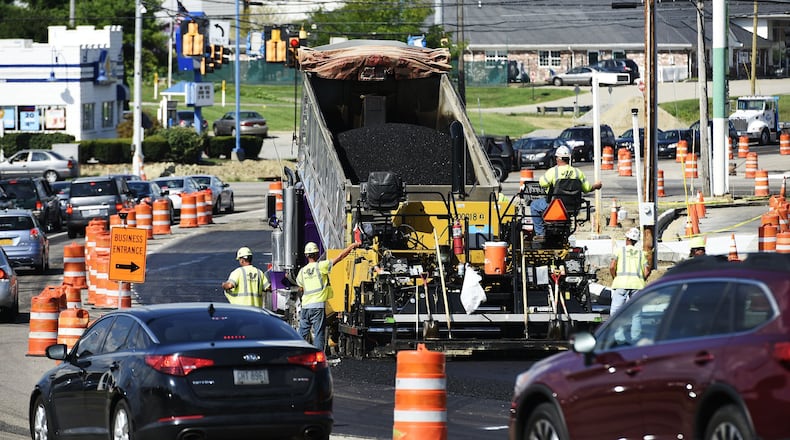“This is an aggressive program to address the city’s infrastructure,” he said.
The city evaluates projects over the course of five years in the long-term financial planning document, and the 2022-2026 CIP has a heavy emphasis on three areas, the largest of which is in public utilities as it makes up 52% of the critical projects for 2022.
City Council is expected to vote today on the CIP, but this does not appropriate funding. Projects are evaluated individually as they are presented to the council for consideration. Just less than $31.2 million of the $117.35 million CIP is planned for 2022.
Public Utilities Director Adam Sackenheim said 2022 “is a huge ask” from his department.
“While $17.5 million in 2022 is a very large ask,” he said, “but if you go back a few years, in 1998 and 1999, the last major significant expansion project for both utilities, the water capacity expanded from 5 million gallons a day capacity to 9.1 (million gallons a day) at the cost of $6 million. And on the sewer side, the city spent about 13.5 million to address wet-weather-related backup issues and sewer capacity issues.”
These types of projects are cyclical, and growing communities would be sustainable for 20 to 25 years.
No general fund dollars are expected to be used for the projects, Sackenheim said as revenues “are extremely strong” on the water and sewer sides. More than $18 million in revenue in 2021 came into Sackenheim’s department.
The largest water projects for Sackenheim’s department are a new water tower, installing new smart water meter readers throughout the city, and re-rating the water treatment plant to a larger capacity.
The water tower, a $5.2 million project, will be bid out next month and is anticipated to be in operation by 2023.
The smart meter reader $6 million project will allow Fairfield to “completely transform the way we read water meters.”
“Right now, we’re behind the curve,” Sackenheim said. “We still have meter readers going door-to-door once a month, touching every building.”
Sackenheim believes water usage is underreported, mainly because of the age of the mechanical meters. The smart reader will wirelessly report usage, and “We do believe the additional that will come from it will more than pay for it,” he said.
He said “conservatively,” the city will pick up an additional 3.5% in revenue, or $500,000 a year.
There will be new production wells expected to be installed in 2022, and though it’s a $700,000 project. This will allow the city to re-rate the water capacity from 9.1 million gallons a day to 10.5 to 11 million gallons a day.
“There are times in the summer months, in August, where we start to bump up to 8 million gallons a day,” he said. “We’re starting to get a little too close for comfort.”
The streets make up 36% of the 2022 critical projects.
“This program continues the city’s dedication to street sustainability,” Timmer said.
The city plans to pave nearly 24 miles annually to ensure the streets in the city do not fall into disprepair.
“Right now, we’re paving roads that haven’t been paved in 23, 24, 25 years, and a little bit longer,” Mann said. With the street sustainability plan, he said that number can come down over time. By 2030, he said the city will be paving roads on less than a 20-year cycle, “which is really what we’re trying to get to.”
The annual paving program for 2022 is expected to cost the city $2.79 million in 2022.
The Michael Lane/Camelot Drive intersection at Ohio 4 will be realigned in 2022, and the $1.3 million project is grant-funded, said Mann.
“We don’t do a lot of large projects without outside funding,” he said.
The project will realign the intersection on the north end of Jungle Jim’s will also make it a quicker experience for motorists as it will remove at least one phase of the traffic signal. The project will also fix the unprotected left-hand turns, and motorists not recognizing when to yield, which has been a major reason the intersection has seen nearly four dozen accidents from 2014 to 2016.
Nearly half of those accidents resulted in injuries, according to police, and Mann said most were rear-end accidents.
About the Author

